Exploring the Philippines: Its Flag, 15 Best Spots & Everything in Between!
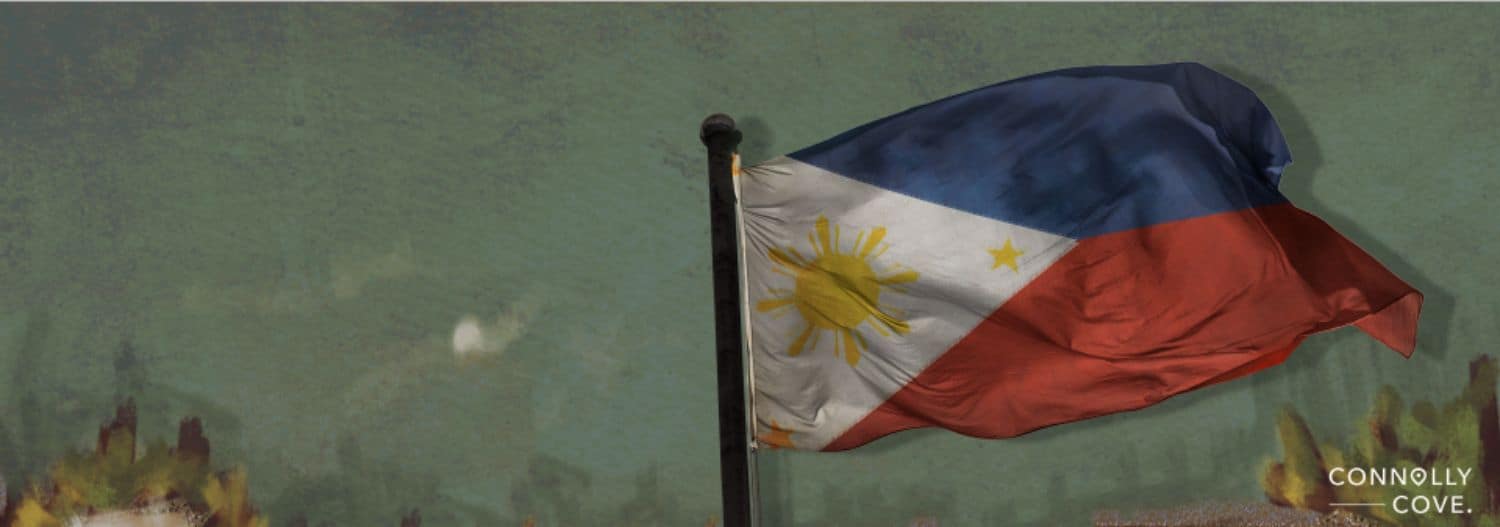
Updated On: April 24, 2024 by Esraa Mahmoud
What is the Philippines famous for? Probably its breathtaking beaches and islands, or perhaps its mouthwatering food. While the Philippines has every right to be famous for what we mentioned before, the country should also be recognised for its flag!
The Philippine flag, arguably one of the most beautiful flags, has such an intriguing history that it is truly worth knowing!
The national flag of the Philippines has two equal horizontal stripes of blue at the top and red with a white equilateral triangle. In the centre of the triangle is a yellow sun. The sun consists of eight primary rays, each containing three individual rays. In each corner of the triangle is a small yellow five-pointed star.
Before taking you on a journey to explore the Pearl of the Orient, AKA Philippines, let’s find out more about its interesting flag.
History of the Philippine Flag

The flag of the Philippines was designed by General Emilio Aguinaldo while he was in exile in Hong Kong. General Emilio Aguinaldo was a Philippine national figure and also the first president of the Philippines.
When it comes to the first time the flag was used, the more famous story says that the flag was raised for the first time in the famous Battle of Alapan between the Phillippine army and the Spanish army in Alapan, Cavite. The battle took place on 28 May 1898, shortly after the return of General Emilio Aguinaldo from his exile and his formation of the Philippine Revolutionary Army.
After winning the battle and defeating the Spanish army, the same flag was hoisted again on 12 June 1898, the same day as the Philippine independence proclamation. The hoisting was at Aguinaldo’s residence in Kawit, Cavite.
However, independence didn’t last for long. In 1899, the Philippine-American War broke out, and with it came the Flag Act of 1907 that banned the display of the Philippine flag, along with the national anthem, in the regions controlled by the Americans. It wasn’t until 1919 when the Philippine Legislature repealed the flag act, and the Philippine flag and national anthem were used again.
Before it became the legalised flag seen today, the Philippine flag underwent several colour and design changes, from navy blue being replaced by light blue to a change in the shape of the sun in a white triangle.
Meaning of the Philippines Flag Colours
The white triangle symbolises peace and purity. The sun’s eight rays on the flag stand for the eight provinces of the Philippines, which fought against the Spanish colonialists. The three stars signify the three regions of Luzon, Mindanao, and Visayas. The blue symbolises patriotism, and the red represents the bravery of the people.
Top Sightseeing in the Philippines
Holding a special place among the countries of Asia, the Philippines are a scattering of picturesque islands offering many vacation options. Snow-white beaches, diving, national parks, architecture, and spicy cuisine; there is so much to lure tourists here.
Outdoor enthusiasts will have a blast at the nature reserves and coral reefs, and the snow-white beaches will captivate those who enjoy contemplative relaxation. As for those looking to explore a new culture, the urban areas present a mixture of colonial architecture and local traditions. There is something for everyone in the Philippines, and coming up next, we are highlighting the top sights to visit in the Philippines.
Coconut Palace
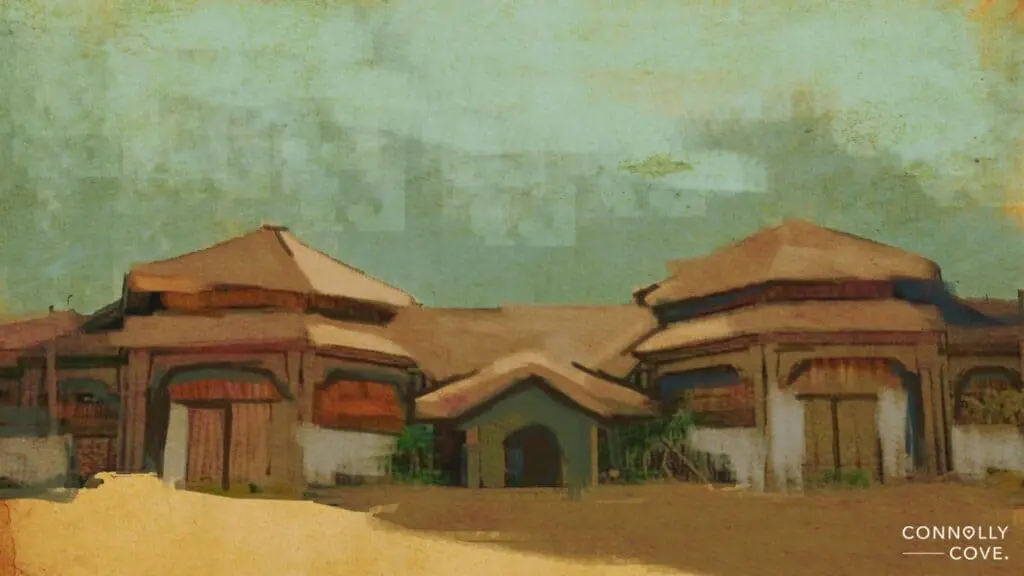
In 1981, the Philippine authorities were preparing for the visit of Pope John Paul II, and a palace in the national style was built especially for the Pope. They used coconut trees as the raw materials for the construction: trunk, bark, leaves, fruits, and even flowers.
As appealing as this might sound, the Pope had another saying and refused to stay in such a pompous palace and chose a more modest abode. Today, the Cocoanut Palace is used as the residence of the country’s vice president. The surrounding gardens and some of the halls are open to tourists, so make sure to pay a visit while in the Philippines.
Malacanang Palace
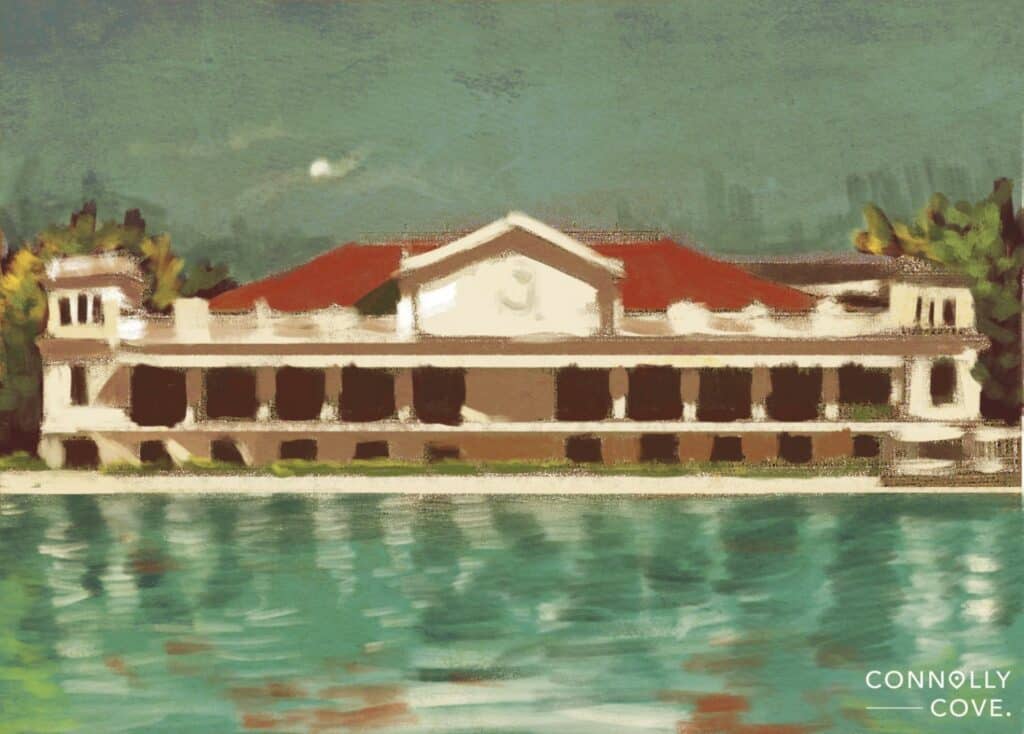
The Presidential Palace in Manila is a blend of two styles: the luxurious Baroque and the restrained Neoclassical. The complex dates back to 1750, and it housed local aristocrats and then Spanish governors. In 1946, after a major restoration, the president of the Philippines moved into the palace.
During a series of rebellions and armed conflicts in the mid-twentieth century, Malacanang was severely damaged. Part of the architectural complex was turned into a museum to get the money to rebuild it. Visitors are invited to explore the library, ceremonial and reception rooms, music room, and dining room and stroll through the palace gardens.
Manila Cathedral
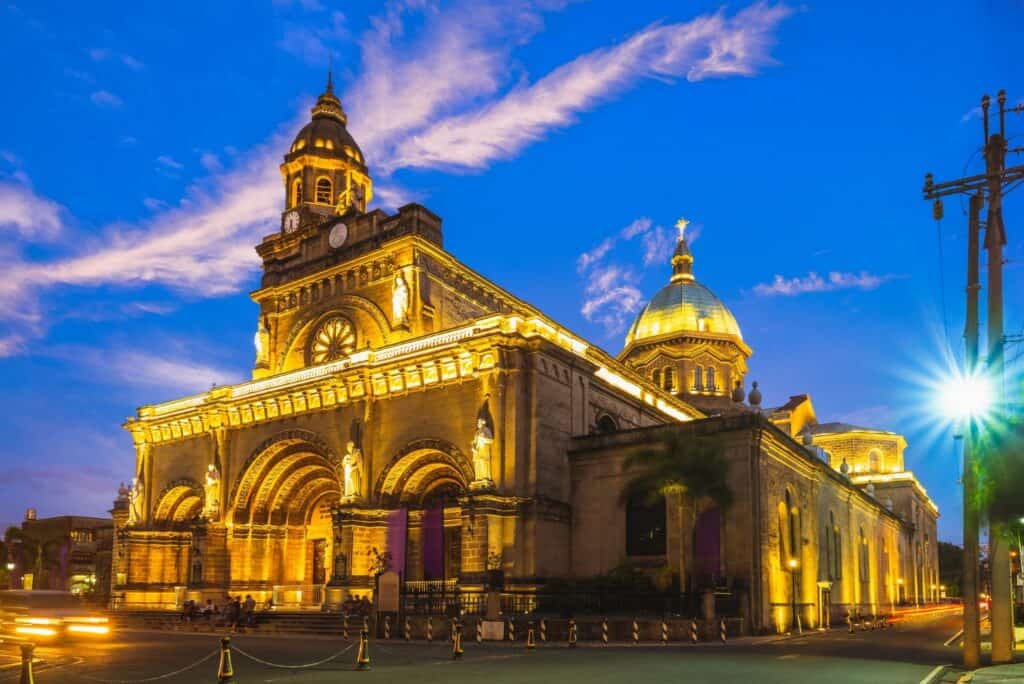
The Manila Cathedral was built in 1971 as a parish, and then it was elevated into a cathedral. However, its original structure was damaged in fires, earthquakes, and bombing during World War II. The church combines the restrained austerity of the Romanesque style with the austerity of the Gothic style.
The façade is decorated with sculptures of saints in bronze, and the large stained-glass windows let in plenty of natural light. There is a distinguished rose glass window, resembling a blooming flower, which is located above the main passageway.
The cathedral’s interior decoration is not extravagant, as nothing should distract believers while praying. The main point of attraction is the sculpture of the Virgin Mary on the altar.
Church of San Sebastian
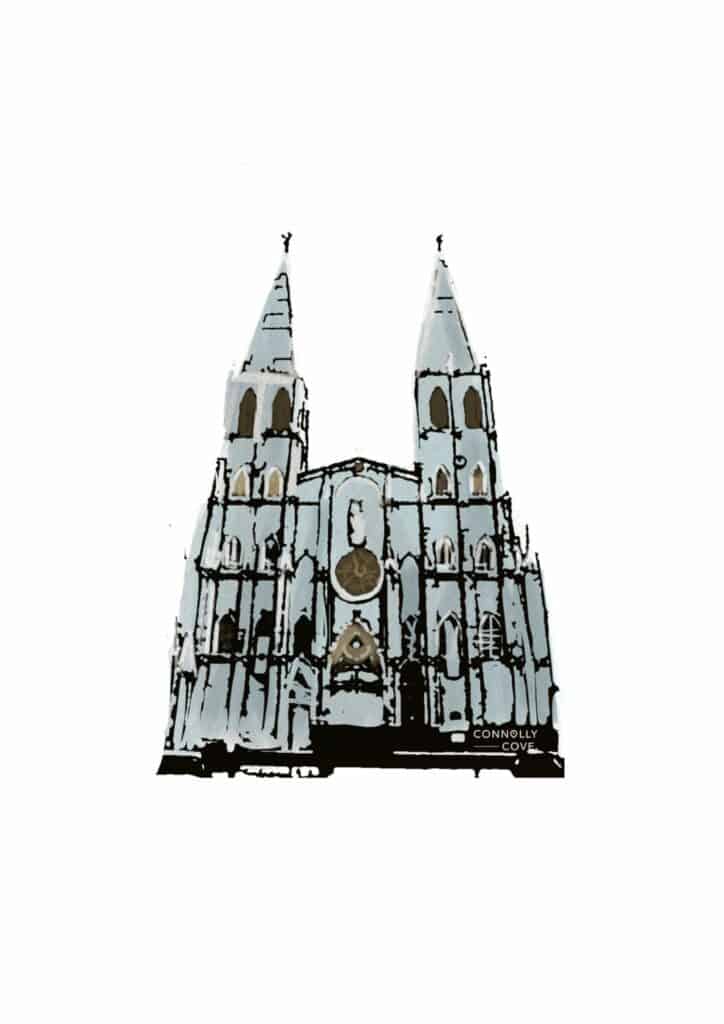
Church of San Sebastian is the most unusual church not only in Manila but in the entire Philippines. There had been many allegations that Gustave Eiffel, the Eiffel Tower’s French engineer, had a hand in the church’s design. Later allegations say that he was only involved in providing the steel for the church’s framework.
While nothing has been entirely confirmed, the metal frame of the building speaks in favour of these allegations for sure. The frame is said to have been made in Belgium and delivered to Manila, whereas skilled artisans made the stained glass windows in Germany.
Besides its attractive, unusual outer design, the church is famous for the sculpture of Our Lady of Mount Carmel. The Carmelite sisters from Mexico gifted it to the church in 1617.
Santo Niño Basilica
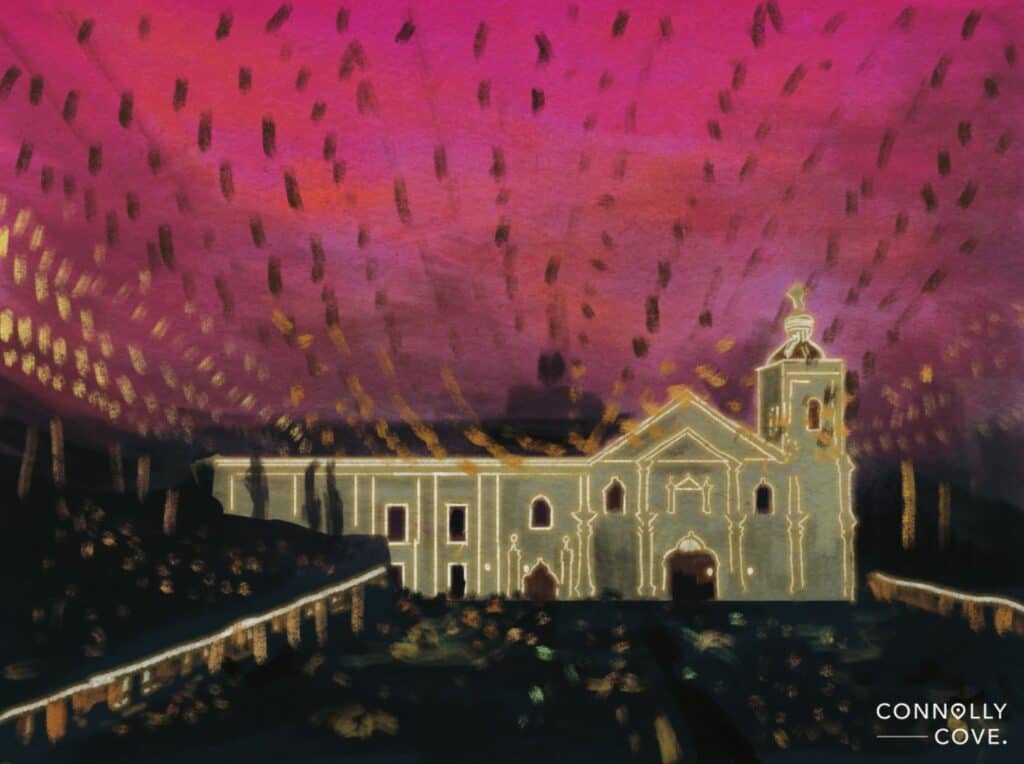
Santo Niño Basilica is the oldest Roman Catholic church in the Philippines, built in 1565. The legend says that it was erected on the very spot where the Portuguese traveller Ferdinand Magellan found the image of Santo Niño de Cebú (Child Jesus).
The architects were the Augustinian monk Andrés de Urdaneta in cooperation with Fray Diego de Herrera. The original building could not withstand the test of time, so it was extensively rebuilt in the 18th century, as it has come down to this day.
The architecture is a whimsical combination of Romanesque and neoclassical styles. The facade is decorated with carved elements such as a symbolic image of Christ and false columns. Inside, there is a museum devoted to the Christianisation of the Philippines. Some of the exhibits are religious works of art, church utensils, clerical garments, ancient bibles, manuscripts, and other artefacts.
In 1965, Pope Paul VI declared the church a basilica. Basilica is kind of a status rank more than anything else. It is to say that this place holds a special spiritual and historical importance, and this status is given by the Pope.
Puerto Princesa Underground River
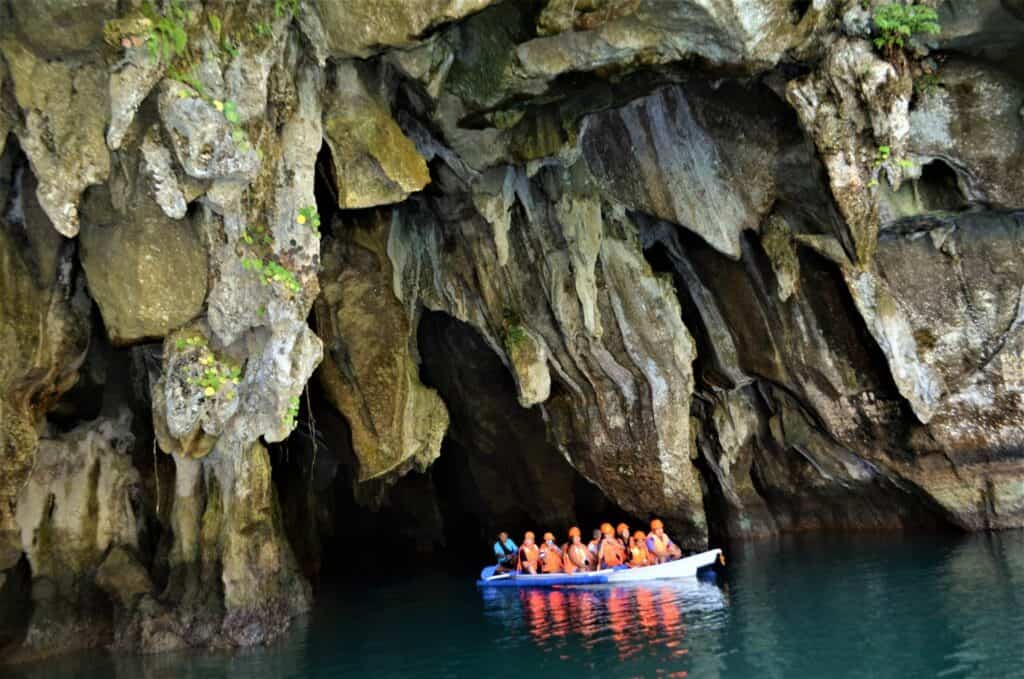
More than 8 km long, the Puerto Princesa River is one of the longest underground rivers in the world. The river starts in Sabang City on the island of Palawan, and the rafting cave entrance is near the town of Puerto Princesa, which gave its name to the natural wonder.
Visitors are invited to take a trip in complete silence amongst the stalactites and stalagmites. The distance to the cave is limited to 1 kilometre because there is so little oxygen in its depth that it can affect your health.
Rice Terraces/ Ifugao Rice Terraces
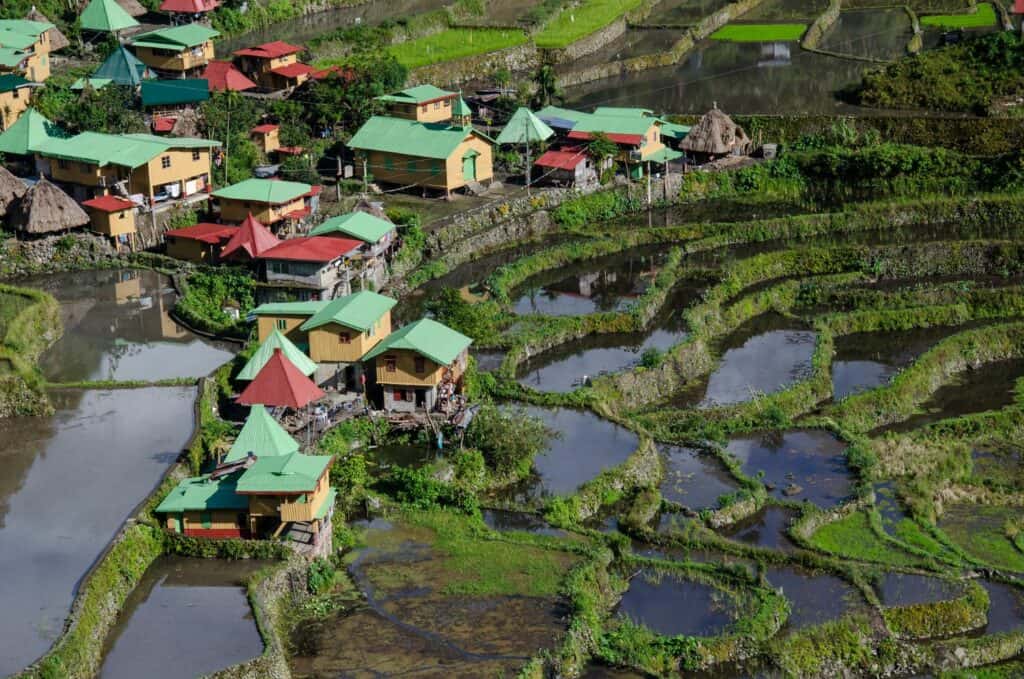
In the Philippines’ northern region, you can find the scenic Cordillera Mountains. Their slopes are covered with neat rows of rice terraces, which look like giant steps. They were created by the Ifugao tribe some 2,000 years ago.
The upper part of the threshold is a ploughed field sown with an agricultural crop. Creating and cultivating such a terrace is a Herculean task and a shining example of how one can adapt to the most challenging circumstances in all-natural conditions.
Chocolate Hills
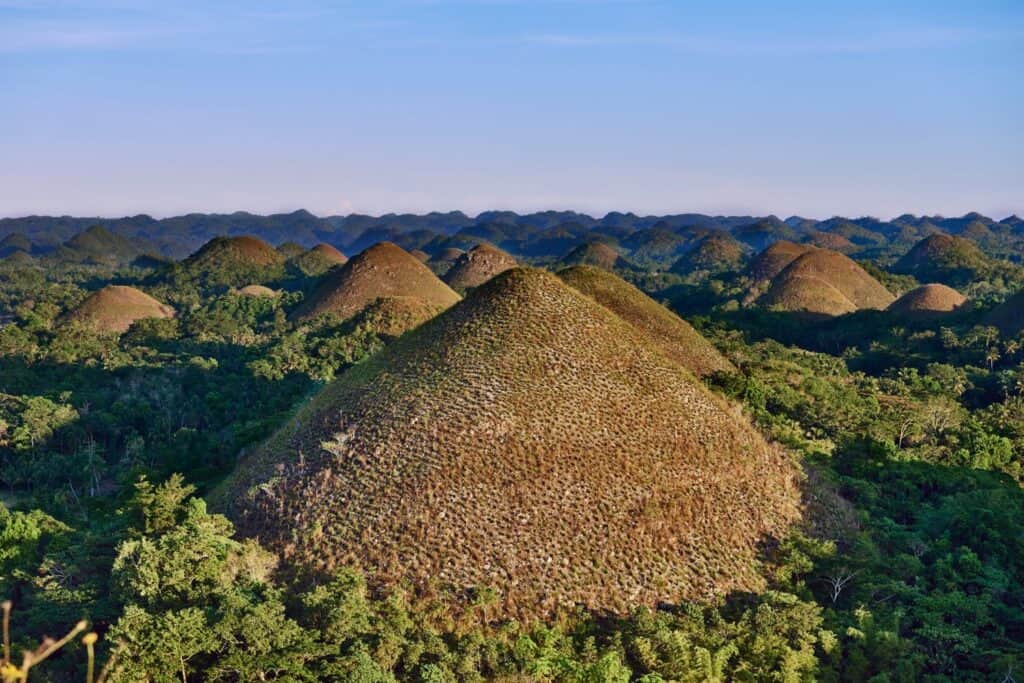
Bohol is famous for its cone-shaped, perfectly formed hills. The height of these geological formations is approximately 120 m. Their slopes are covered with grass, which burns out, turning brown every year during the dry season, and some suggest that this is where the name chocolate came from—sorry, no real chocolate here! The grass turning actually gives the hills a beautiful brownish-beige shade.
Fort Santiago
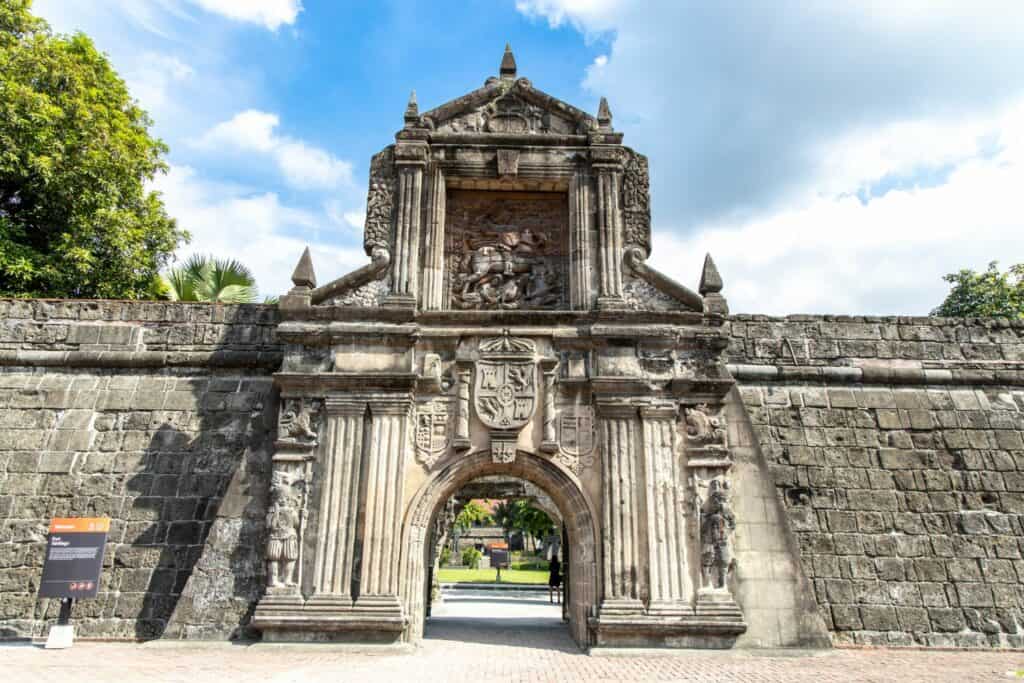
The Fort Santiago citadel was built by the Spanish governor Miguel López de Legazpi in 1571 to protect the new territory from the encroachment of maritime robbers and the fury of the natives, who were not eager to see outsiders in their territory. During the British occupation, the fort was reconstructed: its area was expanded, the length of the walls was increased, and new defence and watchtowers were built.
During World War II, the fort, which had been used as a prison, was badly damaged by raids. It remained in ruins until the mid-1980s, when the local government finally found the funds to rebuild it. Today, the fort and its casemates are a national historical landmark whose walls offer a beautiful panoramic view.
The Tabon Caves
The more than 25-million-year-old Tabon limestone caves, or the country’s “Cradle of Civilization” as some like to call them, are located on Palawan Island. They became famous after a team of scientists discovered the remains of ancient people, stone tools, jade ornaments, pottery, and other everyday objects there in 1962. The findings are 22-24 thousand years old!
There are 29 caves in total, but only 3 of them are open to visitors and only accompanied by guides, who vigilantly watch so that tourists do not damage the limestone walls. The Tabon Caves and their surroundings are one of the top destinations to visit in the Philippines for sure!
Fort San Pedro
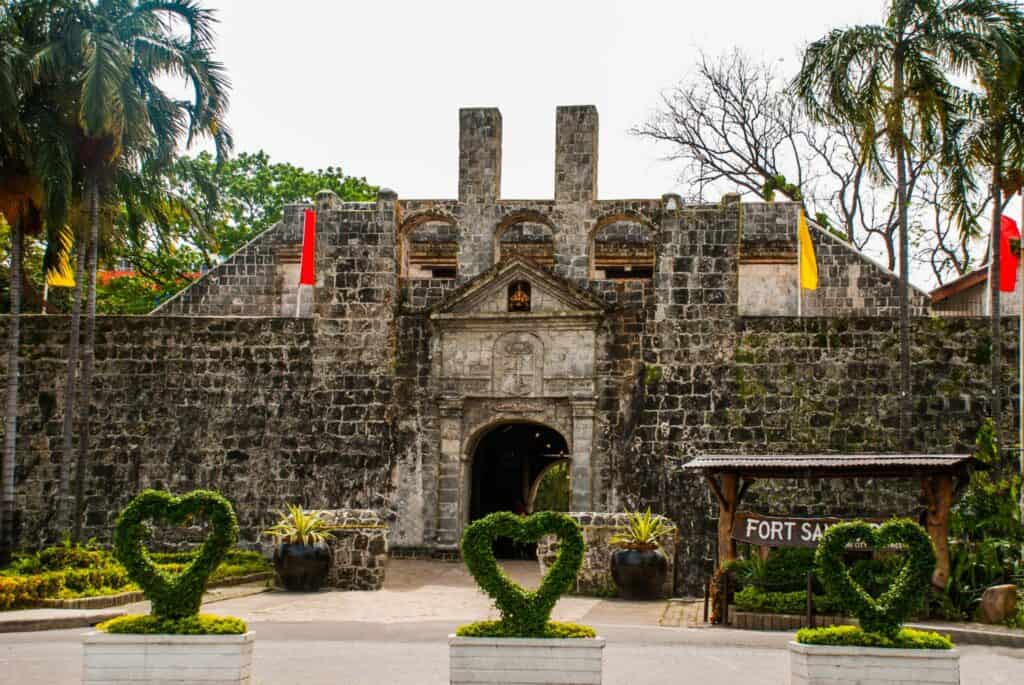
An architectural monument built during the Spanish colonisation, this fortress is located in the city of Cebu. The fortress dates from 1630 and has been continuously rebuilt and altered.
Despite its relatively modest size (the fort covers just over 2,000 sq. km), it has played a major role in the country’s fortunes. Its walls and towers became an insuperable barrier for Muslim invaders.
Over the years, the fortress lost its strategic significance and was used as a storehouse, prison, and military training camp. Nowadays, the fortress is a historical open-air museum that is truly worth a visit.
Villa Escudero Plantations
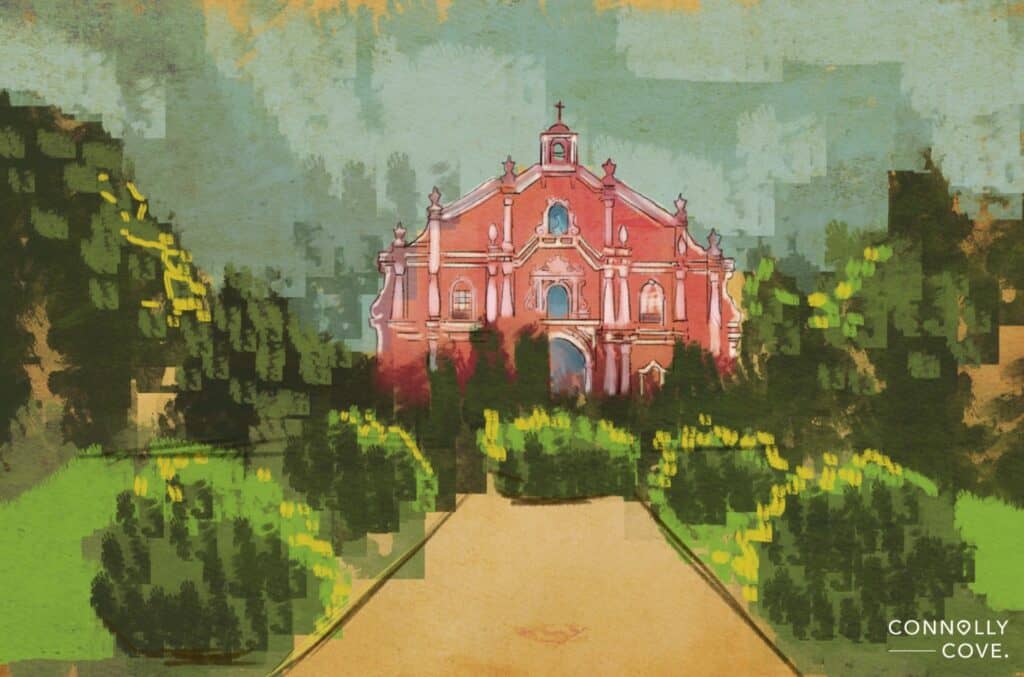
Located near the town of San Pablo, the Villa Escudero Plantations grew out of a private estate. The descendants of the Escudero family did not want to farm like their ancestors. Instead, they transformed the house and the vast surrounding area into an amusement park.
The building includes a museum that has colonial-era artefacts, banknotes and coins, which were once used to pay for money on the islands, jewellery, and cutlery on display. Costume ethnographic shows are regularly organised in the villa.
Bamboo rafts can be hired for an exhilarating boat trip on the river. The highlight is the restaurant by the waterfall, where the tables are set right at the water wall, which tumbles down.
Mayon Volcano
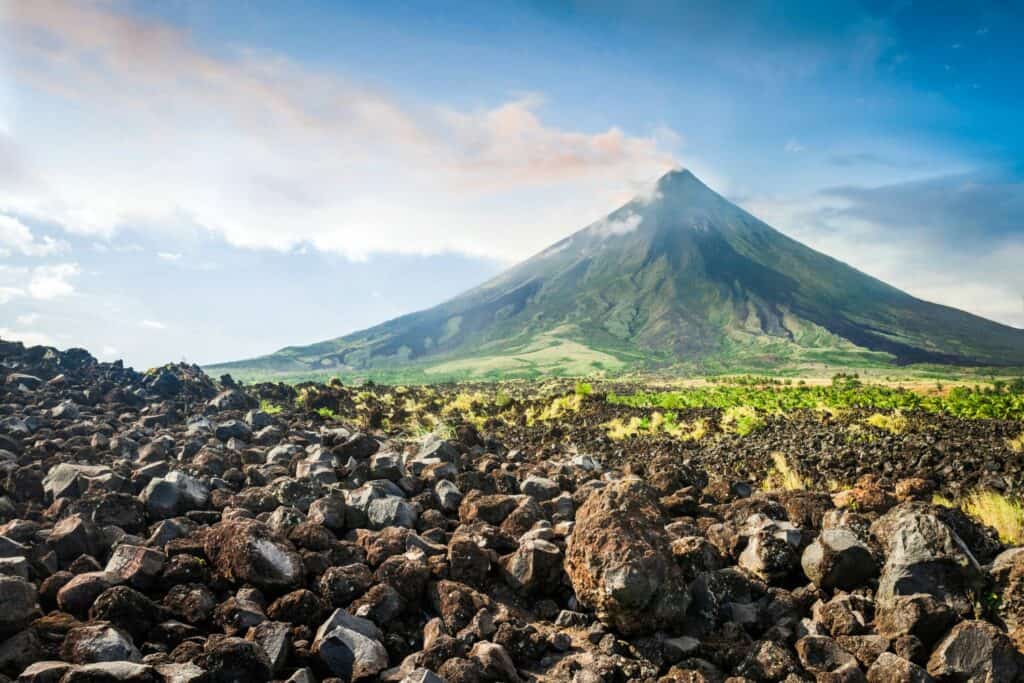
The volcano is perfectly cone-shaped, with grey smoke rising slowly from its peak. It is a sight to behold, drawing crowds of tourists eager to explore the nearly 2,500-metre-high giant. The active volcano of Mayon is located on the island of Luzon, about 60 km away from Legazpi village. The volcano and its surroundings are declared a national reserve.
Arch of Centuries
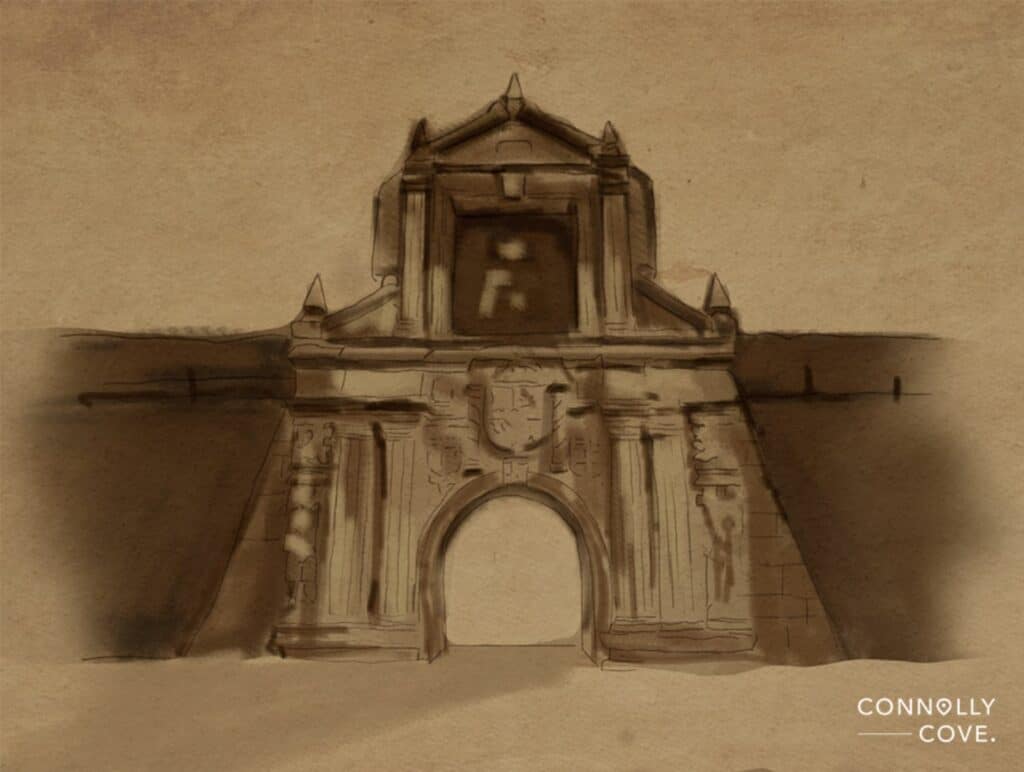
The Arch of the Centuries is a monument located in the university’s campus of Santo Tomas in Manila, 15 metres from the main gate. The Arch of the Centuries has been declared a national treasure by the National Museum of the Philippines. It serves as a reminder of the university campus’s connection to its Spanish heritage.
The monument has become a symbol of knowledge acquisition, a gateway to greatness through which generations of students have passed, including university alumni, national hero José Rizal of the Philippines and President Manuel L. Quezon.
The Arch of Centuries was erected around 1680 on the site of the old Intramuros district in Manila, where the University of Santo Tomas was then located. When the university moved to a new building in the Sampaloc district, the Arch was dismantled into pieces and also moved to the new site, where it was reassembled in its original form.
There is a well-known myth about this Arch that prevented students studying at the university from passing the Arch outwards until they graduated. Regardless of the myth, the Arch is a must-visit destination in the country.
MacArthur Park
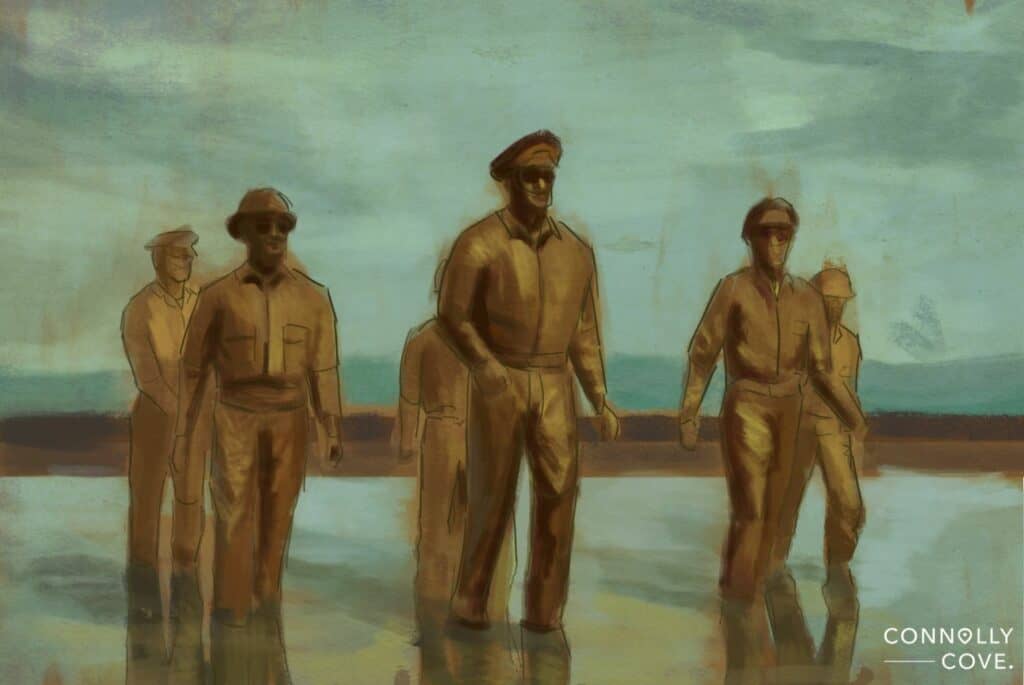
McArthur Park, also known as the Allied Landing Memorial on Leyte Island, is one of the most popular tourist attractions not only on Leyte but in the entire Philippines.
It was here, on Red Beach in Palo Town, not far from the large port of Tacloban, that American General Douglas MacArthur, led by the US-Philippine troops, landed in 1944 to begin liberating the country from the Japanese invaders.
Today, bronze statues of the famed general, Philippine President Sergio Osmeña and Philippine General Carlos Romulo stand on the spot.
The Philippines has always held a unique place in the lists of many travellers, and there is no wonder why here. The country has no shortage of tourist destinations to offer; regardless of your favourite type of holiday activity or new adventures you are looking for, you most likely will find them in the Philippines. If you’re looking for more alluring destinations in the country, our guide to the best places in Asia might aid you with your trip planning.






